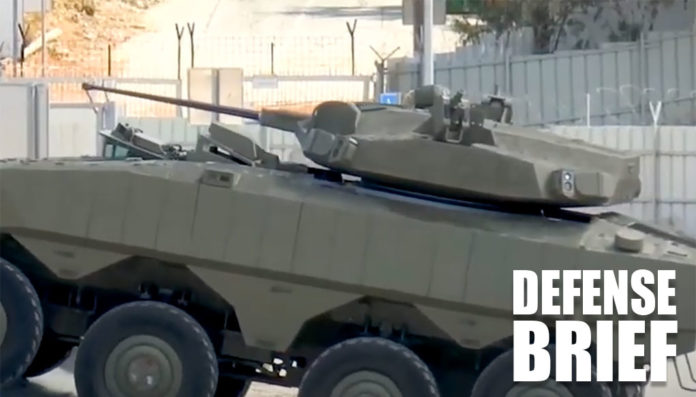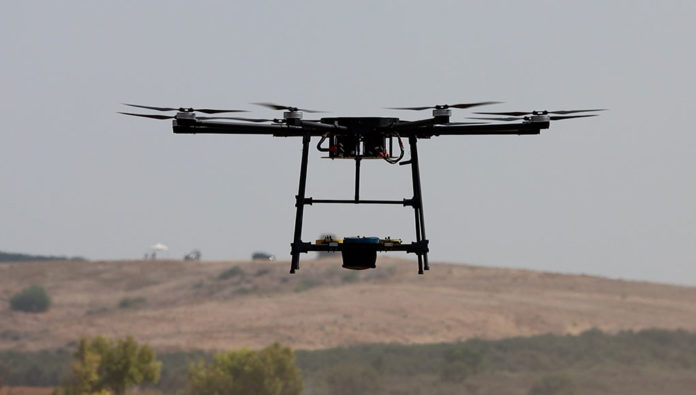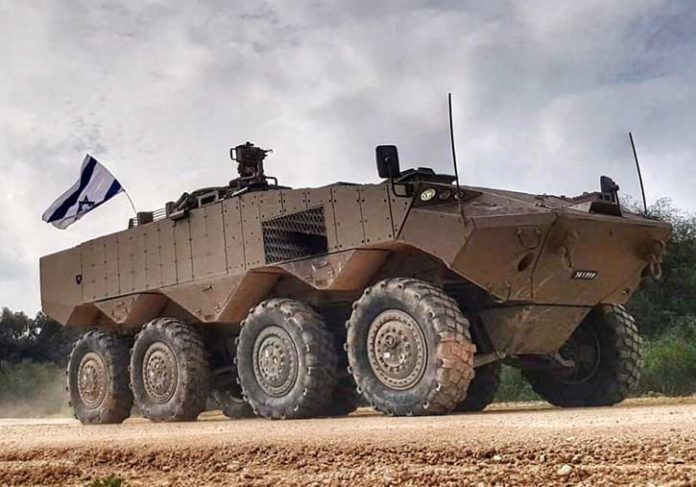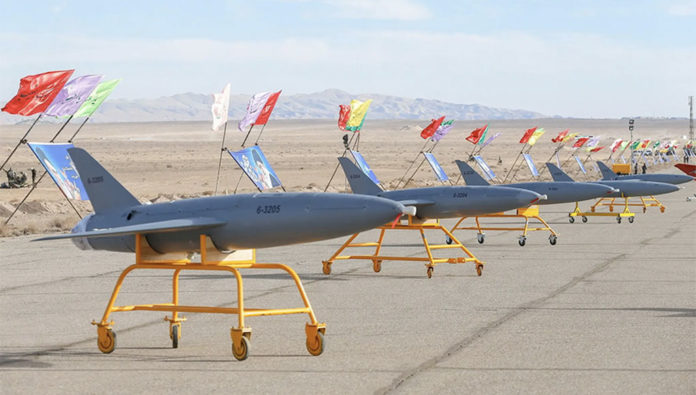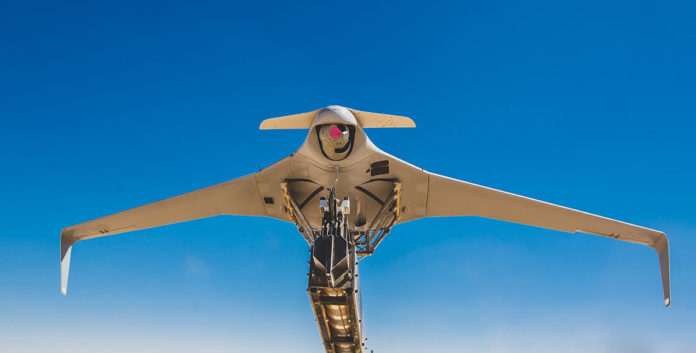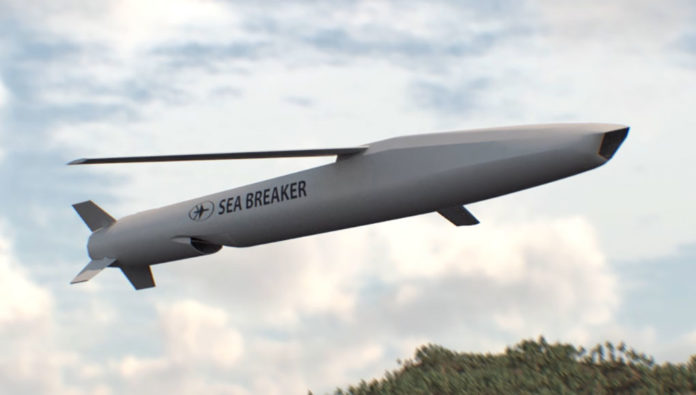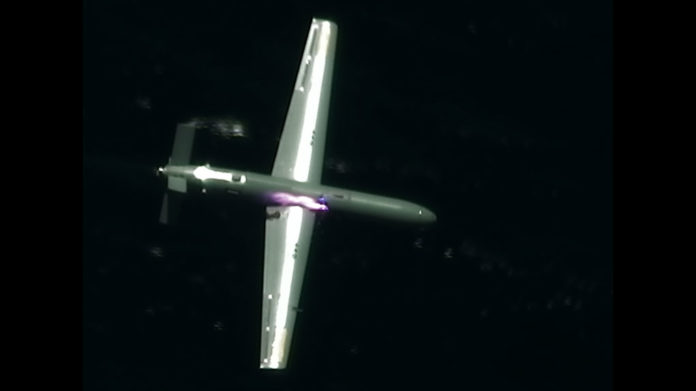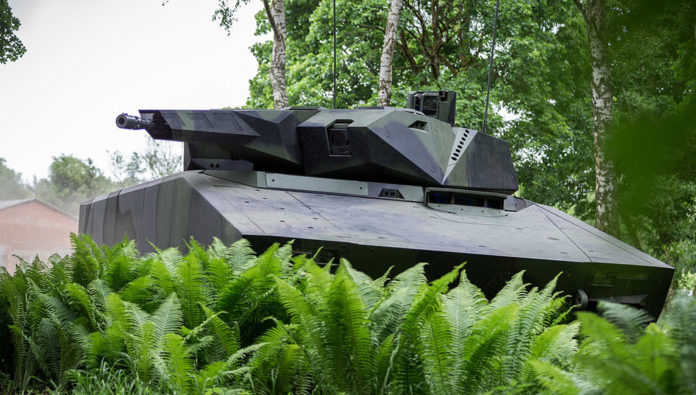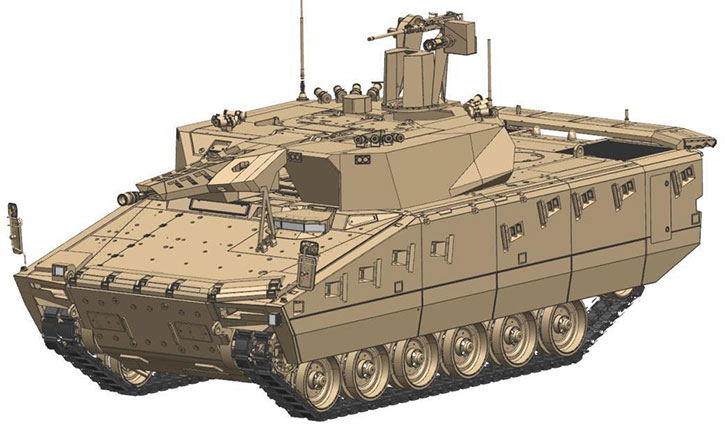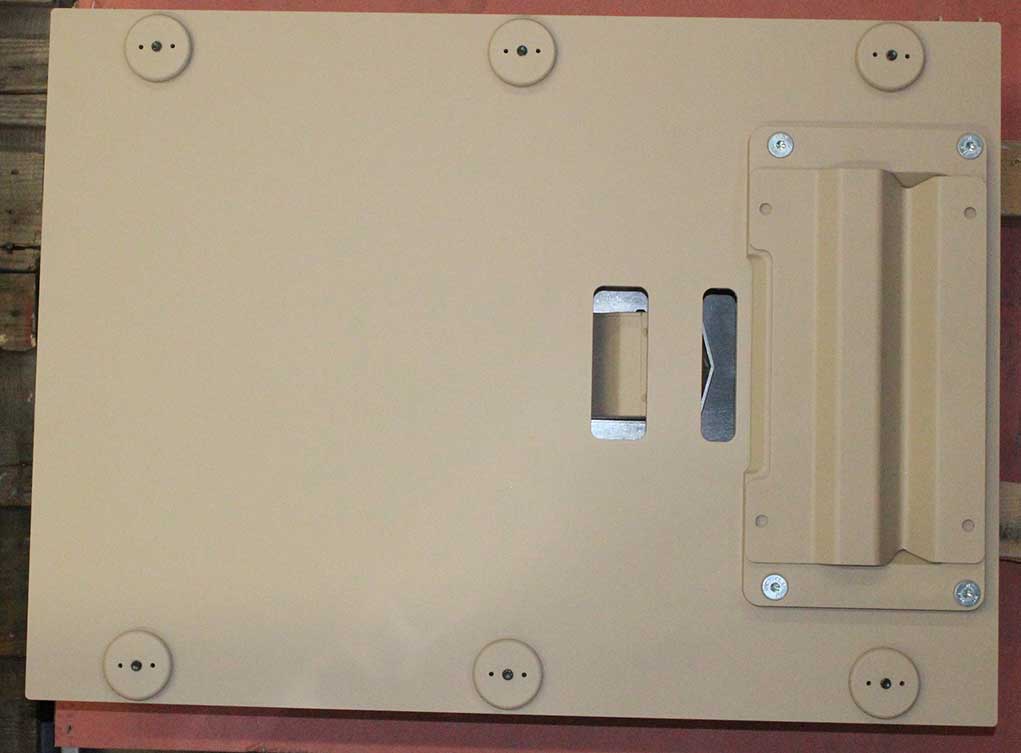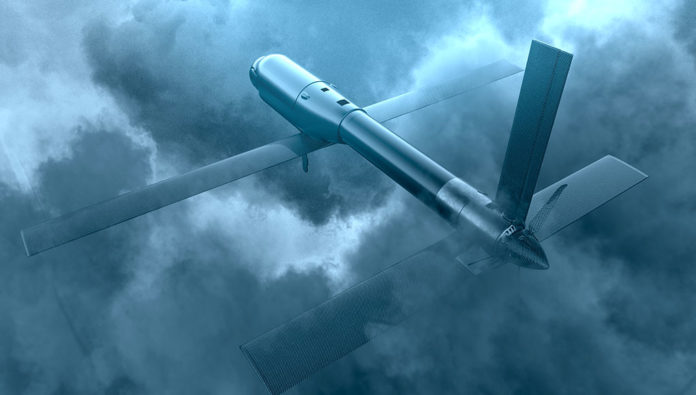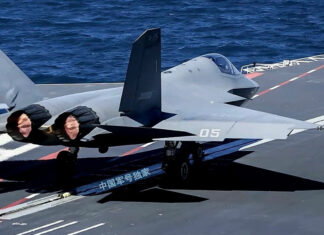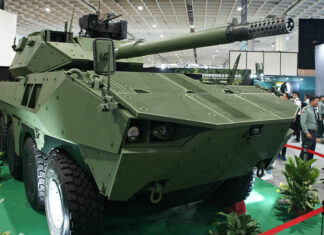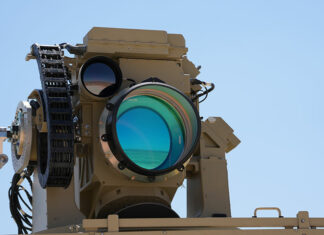New Armored Fighting Vehicles (AFV) are equipped with turrets that not only mount the main weapon systems but add many new features, including optronics, battle management, active protection, guided missiles, and drones. Our podcast discusses the trends and future of such systems.
HevenDrones to use Plug Power’s Hydrogen Power to Fly its Heavy Drones
HevenDrones, an Israeli developer of heavy drones announced an alliance with US-based Plug Power (NASDAQ: PLUG), for the development and commercialization of hydrogen fuel-cell-powered heavy-lift drones and related support equipment and infrastructure required for their operation. Together, the companies plan to provide an integrated solution to power and refuel HevenDrones’ next-generation fleet with the key objective of providing extended flight times and range.
HevenDrones is developing such drones under the Israel Ministry of Defense Directorate of Defense Research and Development (DDR&D). The company designs its own proprietary operating systems and is the exclusive company selected by the Israeli Ministry of Defense to develop a customized fleet of hydrogen-fueled drones.
Bringing together HevenDrones capabilities in developing and manufacturing actionable heavy lift drones with Plug Power’s fuel cell stack technology and systems capabilities, the companies aim to develop hydrogen-powered drones of varying sizes capable of lifting heavy weights and flying for extended periods of time. HevenDrones’ proprietary stabilizing technology provides the capability to lift and move heavy and unbalanced and kinetic loads with applications across a variety of industries and markets.
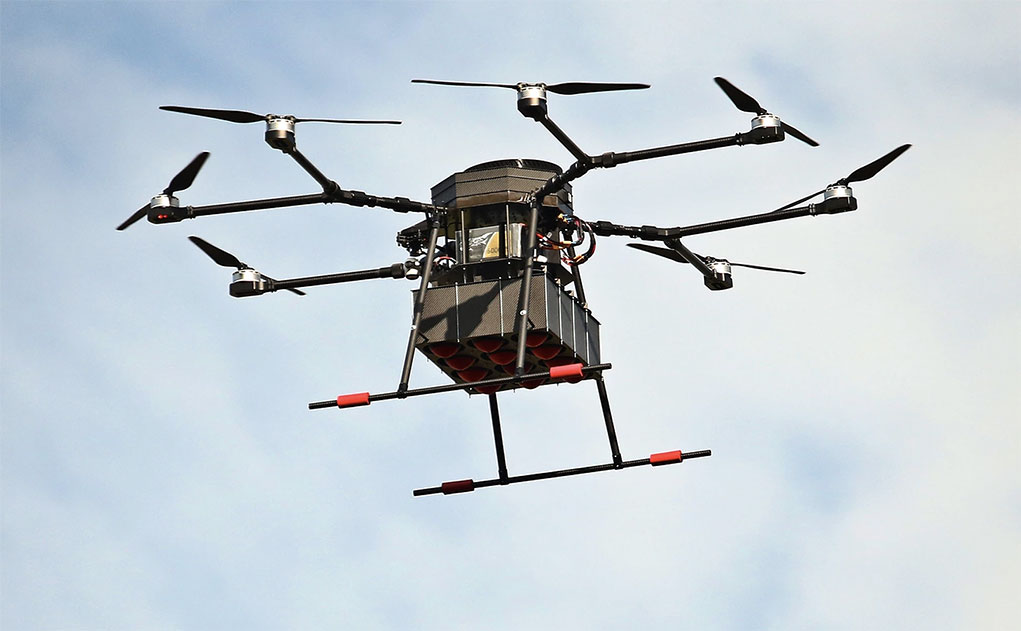
This initiative is part of Plug Power’s strategy to bring its proven hydrogen ProGen fuel cell technology to new markets through engaging leaders in industries such as commercial aviation, aerospace, and now drones. The joint alliance is an important milestone for HevenDrones, which is already a leader in designing and producing heavy-lift and extended flight time drones. By leveraging the expertise of Plug Power’s technology, HevenDrones will dramatically enhance the capabilities of its proprietary heavy-lift actionable drone systems and open new markets and applications for its fleet of drones.
HevenDrones currently offers three versions of heavy lift drones, the Urban Heven, with 50 min. flight time lifting a payload of 10 kg payload, the H100 carrying a maximum payload of 45 kg on a 40 min., and the H250, capable of lifting a payload of 120 kg (250 lbs.) for 30 minutes. It is designed to lift highly unbalanced payloads and is small enough to operate from a pickup truck.
The effort will also include additional scopes of work to provide an entire hydrogen ecosystem, including, hydrogen supply, infrastructure, fueling, and refueling for drone applications. The carbon-free and eco-conscious hydrogen system will incorporate a lightweight Plug Power ProGen-based hydrogen fuel cell stack specifically designed for drone applications. In addition to the extended range and flight times, the hydrogen-powered drones will also positively contribute to the environment and set standards in clean energy drone transportation.
This initiative comes as Plug Power is significantly growing its aerospace fuel cell system capabilities, in line with the company’s vertical integration strategy. As part of this effort, Plug Power is expanding its ProGen platform for additional aerospace applications, including drones, UAVs, and aircraft with different weight restrictions and other unique requirements.
Through the 2019 acquisition of Montreal, Canada-based EnergyOr, Plug Power added fuel cells technology for UAVs to its wide product portfolio. Its systems have set several world records for endurance flights through the use of EnergyOr’s innovative and proprietary fuel cell technology. In March of 2015, EnergyOr powered the world’s first fuel cell multirotor UAV, and the technology was later used in conjunction with the French Air Force’s Centre d’ Expertise Aérienne Militaire (CEAM). In December 2015, the H2Quad 400 was developed, becoming the first fuel cell quadrotor in the world to operate outdoors in a real-world environment.
Defense Brief Podcast: Israel’s Carmel Project Enters 2nd Phase
Israel’s Project Carmel entered the second phase of development last week, selecting Israel Aerospace Industries (IAI) as the lead industry to develop, integrate and demonstrate the next-generation combat vehicle and its advanced autonomy capabilities.
Waging War on Iranian Missile-Drones
Following the Iranian effort to equip their proxy groups with loitering weapons, Israel is spending great efforts to deny the supply of such weapons to terror groups operating close to its borders. According to the foreign press, Israel has repeatedly attacked Iranian facilities in T4 in eastern Syria, where Iran has set up assembly and training activities, for operators of such weapons.
Israel Wants to Augment its F-35s With More F-15s
IAI Demonstrates Advanced Solutions for the Future Ground Combat Vehicle
As technological innovations leap forward, so too do the threats that combat teams must contend with. In response, modern armies have begun utilizing the latest technologies, including automation, robotics, and Artificial Intelligence (AI) to augment warfighters’ capabilities and facilitate the continual improvement of combat system effectiveness to defeat current and future challenges.
In support of this effort, the Israeli Ministry of Defense (IMoD) R&D Directorate initiated the Carmel Project with the purpose of challenging local defense companies to demonstrate their concepts for the integration of automation and robotics into a combat vehicle. Israel Aerospace Industries (IAI) has leveraged its rich technological heritage and culture of innovation to develop the Carmel Demonstrator, which advanced new solutions that redefine the capabilities and concepts for the Future Ground Combat Vehicle (FGCV).
With its proven track record in the design, development, and integration of a broad range of advanced sensors and systems, IAI’s ELTA Systems Group has initiated a new FGCV concept that transforms today’s human-centric weapon systems by leveraging sensor fusion, vehicle autonomy, and artificial intelligence to deliver autonomous mobility, situational awareness, and lethality. The FGCV enables the performance of complex tasks with little or no human involvement, which in turn empowers the human crew to do much more with the available resources.
The FGCV transforms combat vehicles with advanced sensors and automated controls embedded in a ‘man-machine interface,’ much like that of a fighter jet’s cockpit, demonstrating the feasibility of two soldiers conducting complex combat operations under closed hatches. The concept successfully integrated technical capabilities that serve to enhance the mission efficiency of the IDF’s maneuvering forces. The demonstrated Carmel platform is based on the company’s family of autonomous core systems and robotic vehicles.
Specifically, the core was the Athena AI-driven autonomous mission computer. The solution also employed the tried and tested Autonomous Maneuverability and Navigation Kit, a platform-agnostic system that supports various levels of autonomy and installs on small to large wheeled and tracked vehicles, preserving the dual-use as a manned/unmanned platform.
The solution incorporates safety features that enable the autonomous vehicle to operate among conventional maneuvering forces. To date, the system has been integrated into numerous robotic and optionally manned vehicles. Among the capabilities demonstrated were real-time route planning and autonomous driving, enabling the FGCV to respond to the planned route, terrain, and threat – just as the manned crew would do. This function frees crew members to focus on understanding the situational awareness picture and manage the weapons, leaving mobility and driving to the machine.
Autonomy of other automated tasks aided the crew and reduced workload under combat conditions. The system employed multi-task radars and fire source locators to provide early warning from anti-tank threats and enable the vehicle to escape harm. These sensors also facilitated the detection and tracking of drones, vehicles, and humans, and performed Blue Force Tracking (BFT). Additional demonstrated capabilities include the deployment of a drone and LOS and NLOS fire systems.
The concept continues to evolve, assuming more autonomous functions across multiple platforms and fusing distributed sensors into a unified situational awareness. Central to this effort is IAI’s exclusive AUTOMISSION technology, which delivers a very high level of autonomy by using adaptive Artificial Intelligence and Machine Learning (AI/ML) techniques that constantly evolve through operational deployment, just like that of human crewmembers. Furthermore, the Athena mission computer’s distributed design enables capabilities to be effectively networked under unified mission management.
All of this empowers a small number of human operators to control multiple robots and drones, enabling them to undertake missions usually performed by much larger conventional forces and to perform several missions simultaneously.
The FGCV demonstrates IAI/ELTA’s ability to deliver innovative tools that provide a new level of flexibility, resilience, and survivability to field units, improving the maneuverability, situational awareness, and lethality of each element and the entire formation as a whole. It also confirms the company’s ability to contribute proven capabilities and technologies for the benefit of the important Next Generation Fight Vehicle (NGFV) Program.
Read more about IAI’s Land Theater Capabilities
Orbiter – a Big Family of Small UAS
Unmanned aerial systems have become an essential component of military operations in the modern age. They performed intelligence, surveillance, and reconnaissance (ISR) missions, carrying electro-optical/infra-red (EO/IR), radar, and signals intelligence sensors. With the improvement of data-links, enabling command and control in real-time, they also support Target Acquisition and Battle Damage Assessment (BDA), providing precise and efficient engagement of targets.
In the past, only the relatively large UAS were able to carry and operate the payloads necessary to support those missions. In recent years, the miniaturization of electronics and optronics systems and the availability of high-density batteries enable those missions to enable much smaller UAS to carry out most of those missions.
Unlike the larger and heavier drones that operate like manned aircraft and are bound to airfields or other complex launch and retrieval systems, small UAS are optimized to work and support operators at the tactical level. They can move with the forces, deploy from any terrain, including operations at sea, and interface smoothly with the tactical command and control network.
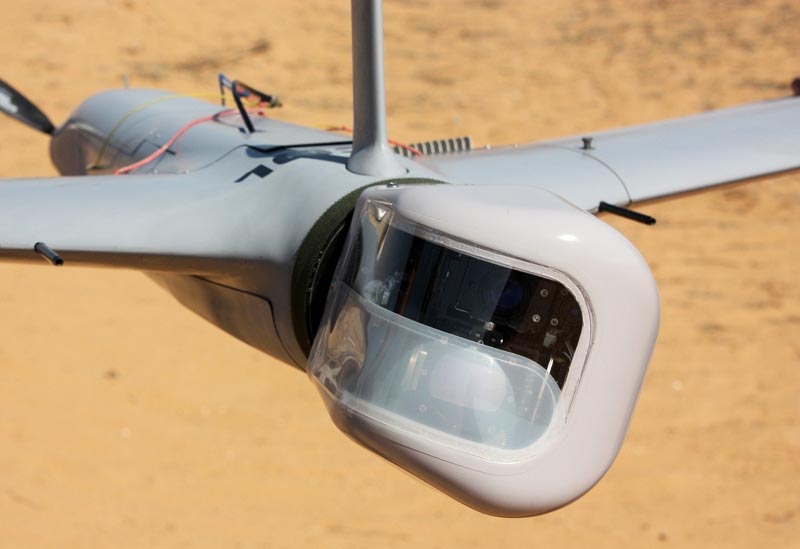
Mini and Tactical UAS
Aeronautics’ Orbiter family of Mini UAS (MUAS) and Small Tactical UAS (STUAS) is designed specifically for tactical applications. These UAS are maintained as organic assets with battalions and companies, and operate reliably and independently with a minimal logistical footprint backpack, vehicular or trailer mounted configurations, delivering critical real-time intelligence to the user.
Aeronautics designed its flying-wing-shaped unmanned aircraft with a blended wing-body that minimizes drag and maximizes lift to support extended missions and maintain a long-endurance, high dash, and slow loiter speed. The sleek flying machines use electrical propulsion for a fast, smooth flight, even under rough weather conditions. The wing shape and silent propulsion result in a low visual and acoustic signature, enabling the platform to operate over enemy territory unnoticed.
The chin-mounted payload has an unobstructed view forward, sideways, and downward, offering a simple and intuitive control of the payload and platform. The platform provided the lift to carry a significant load relative to the platform size, enabling efficient ground handling in the field. Recovery at the end of the mission relies on a parachute and airbag, enabling deployment on any terrain.
The flight and mission control system utilize the proprietary The system is operated and controlled by the Aeronautics proprietary Multi Operation Aerial Vehicle (MOAV) software, an advanced interface developed in-house, designed to serve a range of unmanned platforms. It is compliant with several NATO interfaces, including STANAG 4609 for interface and STANAG 4586 for UAS control, and H.246 for video streaming.
By combining multi-sensor systems on single or multiple platforms, users can merge EO/IR, radar, cellular interception, and electronic surveillance to support tactical missions, develop clear situational awareness for the troops.
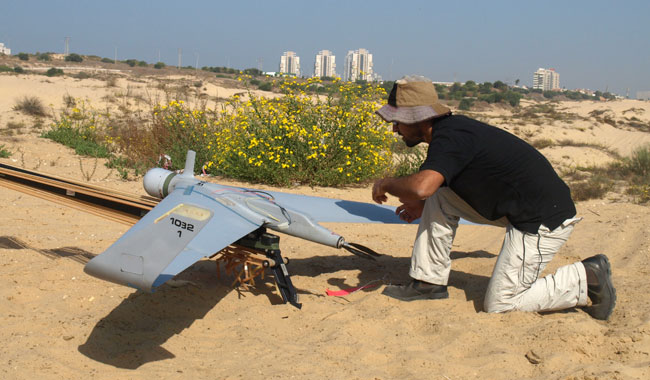
Orbiter 2 – a compact, combat-proven man-portable mini-UAV, designed for operation by the tactical level, providing the warfighter real-time intelligence gathering surveillance and target acquisition and reconnaissance. Orbiter 2 is prepared for an automatic takeoff from a pneumatic catapult in only seven minutes and can fly for four hours on a mission. It can operate covertly in GPS-contested airspace and encrypted, frequency hopping datalink to support full-intensity warfare missions. It can also work at low-intensity warfare, counter-insurgency operations, and urban warfare, supporting Homeland Security (HLS) missions in border protection or maritime surveillance.
Orbiter 2 was designed to host many payloads at the baseline, offering versatile mission capabilities at the tactical edge. It operates day and night with the Controp M-STAMP multi-sensor EO/IR payload, performs persistent surveillance video motion detection missions with STAMP-VM. Photogrammetric mapping & 3D modeling missions use Rafael’s HD-Lite system while acting stand-in electronic attack would employ the Woodpecker EW jammer system from Netline. These are only a few of the tasks carried out by Orbiter 2.

Orbiter 1K – The combat-proven Orbiter 1K is a loitering munition platform based on Orbiter 2. The main difference between the two is introducing a fuselage adaptor carrying an explosive payload at the front end of the fuselage. The platform has a miniature EO/IR payload with a video tracker and a warhead weighing 1-2 kg in this configuration. A catapult also launches orbiter 1K. The system can be operated with a medium-range RF module to support analog or digital communications over 100 km range.
Other variants of Aeronautics’ flying wing design are Orbiter 3 and 4. These are larger and heavier platforms capable of performing extended missions inside enemy territory and operate multiple payloads simultaneously, supporting a military force at the tactical and operational level.

Orbiter 3 uses electric propulsion and is optimized for covert missions, supporting up to 7 hours of operation, carrying payloads up to 5 kg in weight, including multi-sensor stabilized EO payloads with integrated laser target-designation systems. It can also carry a cellular interception payload for electronic surveillance missions. Electrical propulsion allows users to operate quietly and undetected inside contested airspace and carry out special missions such as stand-in signals intelligence and electronic warfare. The Orbiter 3 STUAS is fitted with an encrypted digital datalink, supporting an operational radius of 150 km.
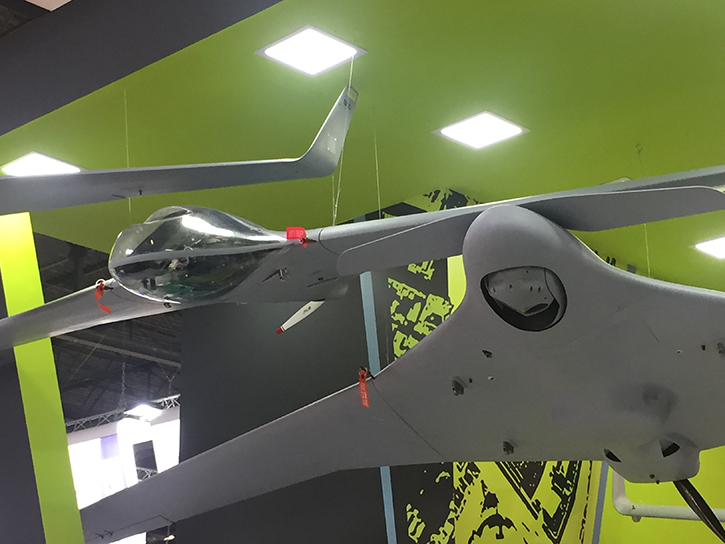
Orbiter 4 Slightly larger and almost twice heavier, Orbiter 4 uses a compact internal combustion engine to support 24-hour missions, flying up to 18,000 ft above ground. It has a much larger payload capacity, carrying 12 kg, compared to 5 kilograms of its electrically powered sibling. Both can carry multiple payloads, while Orbiter 4 can operate both payloads simultaneously, the T-STAMP-XR EO/IR in front and another load tucked in a fuselage bay. This can be a maritime search or synthetic aperture radar, electronic surveillance, or cellular interception payload.
With advanced image processing capabilities, automatic takeoff and recovery, and the ability to navigate with and without GPS and data link, Orbiter 4 delivers the capabilities of larger tactical platforms at a much smaller cost. Airstrip independent and operated by three personnel Orbiter 4 carries a small logistical footprint.

Maritime Capabilities
While all Orbiters can operate from the deck of naval vessels, including small boats with limited deck space, it is the Orbiter 4 that excels in this mission, for its versatile multi-payload capability of up to 12 kg and prolonged endurance of more than 24 hours, with an operational radius of 150 km. With its ease-of-use, low logistical footprint, and a small crew of 3 personnel, this runway-free aircraft suits all operational needs on land and at sea. Due to its open architecture and lean infrastructure demand, the Orbiter 4 can be specially adjusted for operation on any naval vessel, including small patrol boats.
The primary payload for this platform is Controp’s advanced STAMP-XR electro-optic payload. The T-STAMP-XR payload provides UAVs and aircraft with the image quality of large UAV payloads all in one miniature camera system. A secondary payload may be a Synthetic Aperture Radar (SAR). Among the different payloads area maritime patrol radar (MPR) and cellular interception modules, supporting naval surveillance, search and rescue operations over the land and sea, and satellite communications terminal. The cellular interception sensor allows Orbiter 4 to conduct ISR missions over different theaters exploiting the communication activity of the targets.
Among the maritime missions assumed by the Orbiter 4 are Deep-sea and coastal surveillance, Exclusive Economic Zone (EEZ), and Offshore facilities security. Other naval tasks support littoral and brown water operations, including ship self-defense, target acquisition for precision-guided weapons, gunfire direction, and BDA, similar to its role over land.
Summary
When multirotor drones are becoming a common ISR provider at the lowest tactical unit level, military forces require different means to obtain ISR at a long range. These warfighters must be able to see tens of kilometers away, acquiring targets and threats within reach of current and future weapon systems. Operating reliably and sustainably at these ranges, the Orbiter family of STUAS offers extended mission range and endurance, high dash speed, quickly reaching the area of operation, and mission endurance of many hours o a mission. A high level of autonomy, sophisticated communications, and datalinks are required to overcome interference and line-of-sight obstructions to ensure uninterrupted intelligence transfer to the user.
Rafael Positions Sea Breaker as a Multi-Domain, Counter A2AD Cruise Missile
Israel’s Rafael Advanced Defense Systems Ltd. unveiled today the Sea Breaker, a 5th generation long-range, autonomous, precision-guided missile system, enabling significant attack performance against a variety of high-value maritime and land targets. Rafael foresees Sea Breaker as a multi-domain weapon system capable of delivering lethal effects as an anti-ship, land-attack, coastal defense, and surface-to-surface cruise missile.
The need for versatile and advanced naval missiles has emerged since most countries have access to weapons and capabilities previously reserved for superpowers. Today platforms and weapons face advanced threats manifested in large missile-protected airspaces known as A2AD deployed by enemy naval task forces on hips, along the coastlines and inland. Those arrays defend strategic targets in-depth, with air defense and surface attack missiles maintaining effective barriers over hundreds of kilometers, forcing an attacker to launch attacks from hundreds of miles away, using heavy, sophisticated, and expensive weapon systems. Using conventional means, such attacks are often detected and defeated effectively from long range, leading to devastating retaliatory attacks against the naval force that launched the attack.
Other challenges are warfare in the grey zone, where an irregular adversary may threaten the freedom of navigation and movement with weapons emplaced in a crowded urban environment, where attacks against those assets risk unacceptable collateral damage.
With Sea Breaker, Rafael enables modern navies to address the challenges posed by enemy A2AD and grey zone warfare. To avoid such consequences, navies seek advanced, unorthodox capabilities to surprise and overmatch an adversary from a distance, with a high probability of success. According to Rafael, Sea Breaker enables such an edge by employing a smart, agile and lethal naval weapon system that can deliver coordinated and scalable attacks on highly defended naval and land targets with a high probability of success. The missiles can successfully operate in littoral or brown water, including archipelago and engagements in which previous generation RF-seeker-based missiles were ineffective.
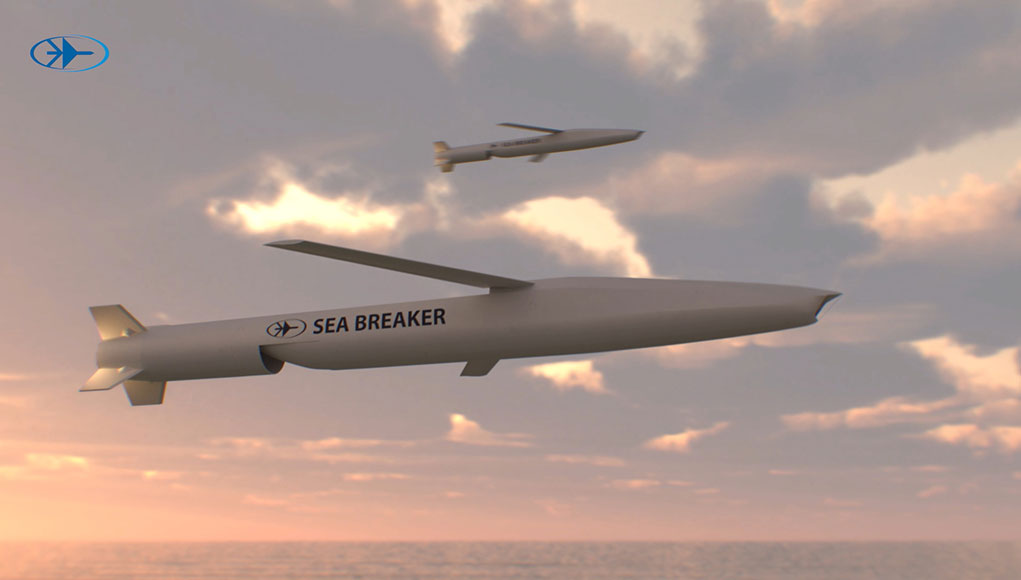
Unlike in the past, when sea/sea missiles were based on the radar for target seekers, today, many new anti-ship missiles use EO/IIR seekers. While earlier generation EO/IR has suffered from limited visibility in harsh weather conditions, Sea Breaker fuses different sensing modes, combining inertial navigation, Imaging Infra-Red (IIR), terrain profile matching (TERPROM), and scene matching to provide a reliable and accurate navigation solution in all weather conditions.
Subscribe to get the full content including this comparison table

The powerful processing unit also supports automatic acquisition (ATA) and recognition (ATR) of stationary and moving targets, using Artificial Intelligence (AI) and Machine Learning (ML) trained to process Big Data resources obtained by the seeker to separate the targets from the noise collected by the missile’s sensors. This process allows Sea Breaker to overcome the challenges of weather and countermeasures. According to Rafael, their technology is two generations ahead of the competition, as it has evolved for five generations on various missiles the company has developed. Moreover, the Sea Breaker’s efficient targeting system can perform in complex environments is unmatched by most radars, which are challenged in crowded and littoral environments.

The Sea Breaker is a compact missile less than four meters long that weighs less than 400 Kg and packs a 113 kg (250 lbs.) warhead. The missile uses a booster rocket and turbojet sustainer to fly up to 300 km (nm) following a preplanned attack trajectory. It has cruciform tail rudders for steering at loads up to five Gs and wings that fold out after launch to generate the lif that supports the cruising phase. A small jet turbine sustains the flight at a high subsonic speed throughout the missile’s preplanned trajectory. According to Rafael, the warhead is designed to deliver enhanced effects, penetration, blast, and fragmentation effects equivalent to a 500 lb (226 kg) Mk-82 bomb, making a single hit effective enough to neutralize a frigate-sized ship.
The missile will be launched from naval platforms, varying in size, from fast attack missile boats to corvettes and frigates. The land version employs Rafael’s highly mobile SPYDER air defense missile units mounting six Sea Breaker launcher canisters. The land-based variant is identical to the naval missile and is poised to become a central part of a shore defense. According to the customer requirements, the coastal missile system in a battery architecture supports standalone launchers, or operation as an integrated solution, with a Command and Control Unit (CCU), various sensors, technical section, and reloading units.
For the launch of its marketing campaign Rafael focuses on small and medium ships and land vehicles as the platforms for Sea Breaker. In the future, more options will likely be considered to support evolving naval warfare concepts of unmanned ships and submarines. Sea Breaker is currently at an advanced development phase and has raised interest with several potential customers, likely nations located at the South China Sea. Some of those nations would be potential candidates for this versatile weapon and already operate Rafael’s Spyder air defense systems.
Israel Tested an Airborne High Power Laser Weapon System
Israel’s Ministry of Defense (IMOD) has recently completed a series of tests in which an airborne, high-power laser weapon system (HPL-WS) prototype intercepted multiple aerial targets in quick succession. Elbit Systems developed the system under the high-power laser program led by the Directorate of Defense R&D (DDR&D) at the IMOD. This game-changing series was conducted in a testing field in the center of Israel, in close cooperation with Israel’s Air Force flight test center, “Yanat.”
An HPL was installed on a light aircraft during the test series and was tested in several scenarios. It successfully intercepted and destroyed all of the targets that were launched throughout the test. Some of the targets were Elbit System’s own Sky-Striker loitering weapons. The targets were intercepted at various ranges and flight altitudes, about 3,000 ft. above sea level. The test series is the first phase in a multi-year program led by the Directorate of Defense R&D and Elbit Systems to develop a laser system against a variety of long-range threats.
While the HPL-WS prototype has demonstrated the first step in the intercept of unmanned aerial vehicles (UAV), the new capability will be able to engage more challenging targets. “We believe in the use of a high-power laser to carry out low-cost airborne interception of rockets and hostile unmanned aircraft, closer to their launching areas and away from population centers. It offers a significant change in Israel’s defense capabilities. Oren Sabag, General Manager of Elbit Systems ISTAR, said.
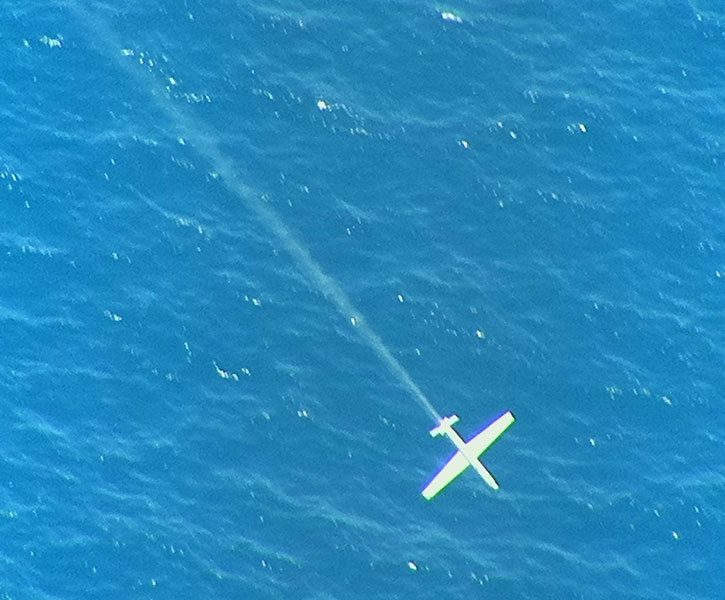
The objective HPL-WS will be able to augment Counter Rocket, Artillery, and Mortar (C-RAM) capabilities such as the Iron Dome. By destroying enemy rockets at a much lower cost per kill, compared to the Iron Dome’s Tamir guided interceptor missiles that cost tens of thousands of dollars per intercept, HPL-WS challenges the asymmetric rockets threat with a competitive battle economy of only a few dollars per kill. According to preliminary assessments, when the HPL-WS reaches full capacity, it will return the investment within few days of high-intensity battles as experienced during the recent operation ‘Guardians of the Walls’. By destroying many of the rockets fired at Israel using low-cost laser as a first line of defense, Tamir missile interceptors will be saved to intercept the few rockets that will manage to evade the first laser ‘fence’.
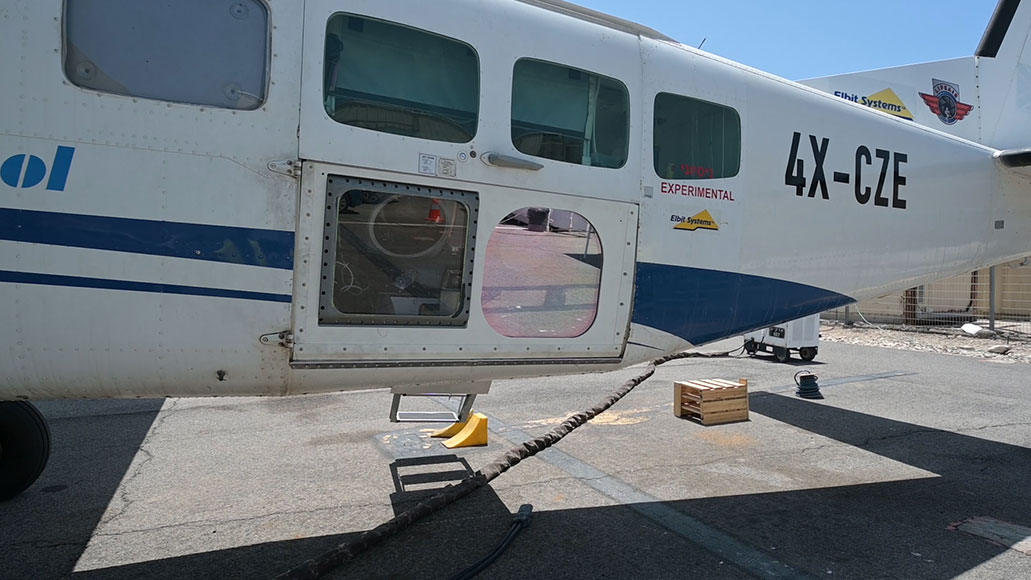
The airborne HPS-WS will complement Israel’s multi-tier missile defense array by introducing low-cost first-tier defense, including the Iron Dome, David’s Sling, and Arrow missile interceptor systems. This system will increase the effectiveness of air defense against existing and future threats in the region. Airborne laser has the advantage of providing a reliable upper layer.
The method of airborne interception by laser offers significant advantages over land-based intercepts, for its low cost per intercept and the ability to position the airborne laser platform above clouds, where they will be able to engage rockets within the enemy area or close to the border, overcoming weather limitations and atmospheric disturbance.
“We successfully intercepted several UAVs in the air, within a range of more than 1km.” Brig. Gen. Yaniv Rotem, Head of Research and Development in the DDR&D, said. “This is a groundbreaking technological achievement, and it is critical for further development of our airborne High-Power Laser System,” Rotem added. The airborne system in eight to 10 years, Rotem said, adding that in another decade, it is hoped that such a system could destroy targets hundreds of kilometers away.
Rotem said that in a few years the ministry aims to build a laser with a power of 100 kilowatts that will have an effective range of 20 km. The ministry is aiming for an operational system by 2024 to be deployed at the Gaza border area for shooting down rockets Rotem said the ground 100 kW system will also be able to destroy targets at a range of 8-10 km.
IDF Debuts Drone Swarms to Seek and Attack Hidden Targets
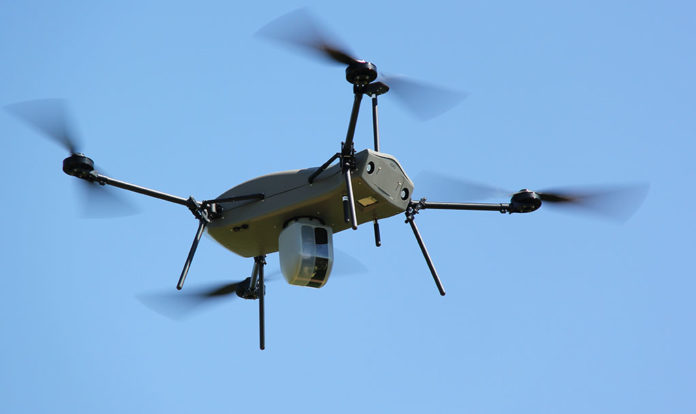

The recent clashes between Israel and terror organizations in Gaza (operation Guardians of the Wall) demonstrated some of the forceful methods a nation-state may employ against aggression from non-state actors. Through the 15-day conflict that erupted after the rocket attack on Jerusalem, Israel Defense Forces (IDF) responded with massive aerial attacks, performed primarily by the Israel Air Force (IAF) using precision-guided munitions. These attacks were directed at terror targets such as buildings known to host command posts; multiple rocket launchers dug in underground points amid populated neighborhoods and industrial facilities that were part of Gaza’s military supply chain.
Little known was the part of IDF land forces’ in the operation. Although Israel refrained from committing its land forces to cross the border, some of the land forces employed unmanned systems to strike inside the enemy area to seek and destroy hidden targets. This was the combat debut of a new capability developed by the IDF that demonstrated the great value of manned-unmanned operations at the tactical edge.
Since 2019 the IDF was busy fielding the Multi-Dimensional Group (MDG), a brigade-size unit manned by elite soldiers and technical experts that tested and operated numerous new equipment to maximize combat agility and firepower. The MDG goal was to empower battalion-size battle groups with unmanned assets, advanced command, control, and intelligence, and precision attack capabilities that could bring to affect its organic firepower and support fires from other units and echelons.
Parallel to the evolution of the MDG, other capabilities evolved in the IDF paratrooper brigade to improve the battalion’s situational awareness, combat maneuvers, and fires. This process began with converting one of the combat support companies from a mortar support unit into a Seek-and-Destroy (S&D) company, equipped with autonomous drones that operate in groups to gather intelligence, acquire targets, and deliver precision attacks.
Initially, the unit employed drone swarms provided by Elbit Systems as the developer and integration partner under the IMOD Defense Research and Development Directorate (DR&DD) and Land Forces Command (GFC) Weapon Systems Directorate. This integration included the provision of weapon systems, drones, networking, and C4I. Israel’s Security Agency (ISA) and IDF specialized units provided the methods and tools to access the vast strategic intelligence resources that enabled the company operators to enhance information and situational awareness at the tactical edge.
The backbone enabling the new capability was the latest version of the IDF network-enabled command, control, and communications and intelligence (C4I), Torch 750 system that now links the division and brigades to the company and platoon level. Supporting the lower echelons, the system runs on apps and tablet computers that give users access to new and relevant intelligence information.
The system gathers real-time reconnaissance collected by the drone swarms and correlates it with relevant intelligence, communications intelligence (COMINT), and cyber, collected and stored in the IDF and ISA intel databases. Integration of all resources enables the creation of a highly detailed and accurate situational picture. Using tools to spot anomalies could indicate the existence of hidden enemies or targets in real-time.
As part of the Battle Management System (BMS) of the brigade and battalions, Torch 750 can commit different elements under the brigade’s command that can deliver effects to engage targets acquired by other elements. The new system also has a tight integration of air support at the battalion level. With this capability, ground forces can direct precision air-launched effects at targets they can see without delay.
Another new capability that S&D companies can leverage is the Iron Sting precision-guided mortar bombs, using GPS and laser homing to deliver precision effects by mortars. In March 2021, the new system completed acceptance tests toward fielding by the IDF. The developer Elbit Systems offers the Iron Sting for all types of smoothbore 120mm mortars, including the Cardom and Keshet mounted on APCs, the Spear carried on 4×4 combat vehicles, or Sling, optimized for commandos. By combining the Iron Sting’s precision and ‘Seek and Destroy’ target acquisition capabilities, the new formations can dominate a battlespace significantly larger than equivalent units with conventional capabilities.
Acceptance test of the Iron Sting precision-guided mortar capability. Source: IDF
Militarized Drones and Swarms
In recent years drones have proved essential for all military operations, providing critical intelligence and pursuing time-sensitive targets. As they loiter over the battlespace, drones can spot enemy activities on the ground, but transferring this insight into action may take hours as the call for fire is processed through the echelons until the order to fire is approved.


Empowering the company commanders with the means and authority to order and approve an attack by their organic weapons, supporting artillery, naval, or air support enables the IDF to engage targets having a short lifespan. These targets are often exposed by exploiting the friction created through the movement of manned or unmanned combat units in enemy territory.
Although commercial UAVs are often used for experimentation and system development, the IDF opted to employ militarized drones better equipped to operate contested environments, interference, jamming, and deception commonly used against drones. In 2017 Elbit Systems was selected to provide multi-rotor drone systems based on a series of drones developed by its subsidiary Flying production.One of these platforms is THOR, a multi-rotor VTOL drone that was designed to meet MIL-STD-810 requirements. THOR can fly at altitudes of up to 12,000 ft above sea level (3,660 m), and operate at extreme temperatures (-40 to +65), withstand wind gusts and heavy rain and snow, and resist the penetration of sand or dust. With a mission endurance of 75 minutes, it can operate at a radius of up to 10 km, flying up to 2,000 ft. (600 m) above ground. THOR can carry payloads up to 3 kg, including a high-resolution day/night payload.
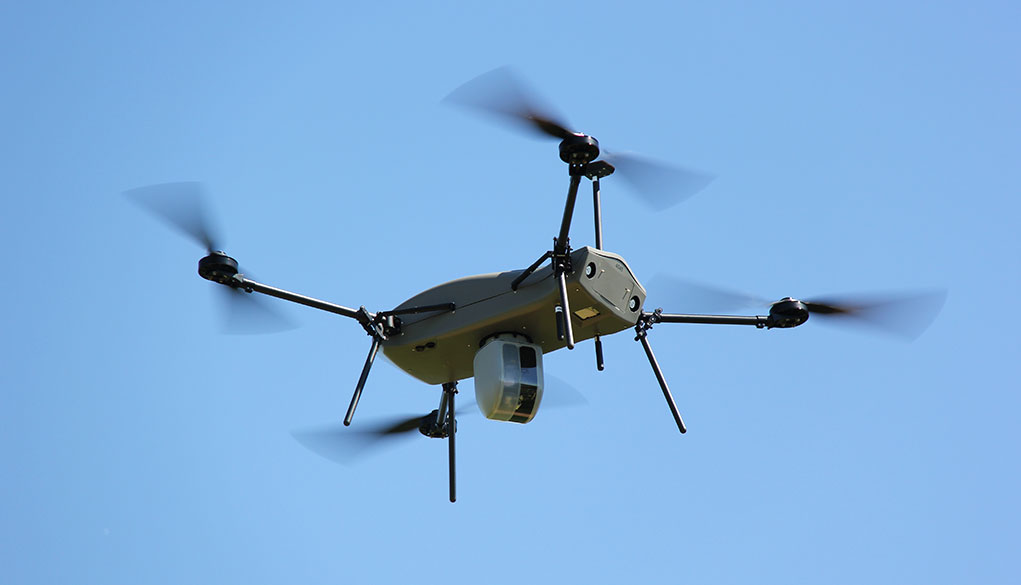
THOR is extremely quiet compared with the common commercial drones, even as it flies at the maximum speed of 40 km/h. The drone features real-time datalink and control software designed for military users. It is suitable for operation in urban areas and open terrain with an automatic takeoff and landing capability and autonomous mission flight.
Other drones are purpose-built for specific missions, including persistent surveillance in urban terrain, indoor reconnaissance, and kinetic effects. By sharing a network, autonomous capabilities, and artificial intelligence, the drones operate together as a group or ‘swarm,’ leveraging unique capabilities and efficiencies that conventional means cannot deliver.
On May 6, 2021, as the fighting in the south erupted, the new S&D unit moved quickly to become the first military unit to operate drone swarms in combat. Within few hours, they deployed and fielded this brand-new system, seeking and destroying dozens of hidden enemy targets in complex terrain in rural and urban areas.
A clip from a recent exercise of the MDG showing a micro-drone employing a unique ‘perch and stare’ capability in a dense urban area. Source: IDF Spokesperson.
Within a few days, the new unit brought stunning results. A single company empowered by drone swarms, precision weapons, and comprehensive C4I delivered over 30 missions, destroying dozens of enemy targets several kilometers beyond the border. They were able to locate the enemy in complex urban and densely vegetated rural areas, designate targets, assess those targets at the company CP, strike the targets selected for engagement and perform battle damage assessment (BDA), all that done within minutes by drone swarms.
Following the success of these S&D companies, the GFC recommended converting all combat support companies in regular force to S&D companies over the next year. This new capability will dramatically improve the IDF’s combat effectiveness in dealing with a possible eruption of hostilities with Iranian-backed Hezbollah on the Lebanese border.
Oshkosh to Equip +500 US Army Strykers with Samson Gun Turrets
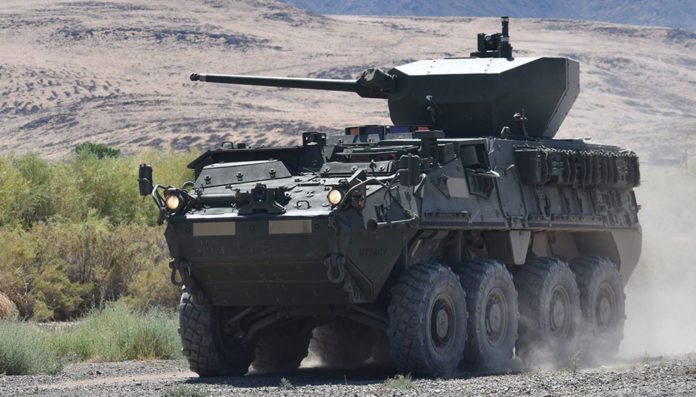
The U.S. Army has selected Oshkosh Defense to integrate and build an unmanned turret for its Stryker combat vehicle. The Medium Caliber Weapon System (MCWS) will subside the current unmanned turrets on Stryker Dragoon in service since 2016.
The initial order worth $130 million covers the production, integration, engineering, and logistical support for 91 Stryker MCWSs. 83 of these vehicles are destined for the I-2 Stryker Brigade Combat Team and are scheduled to become operational by late 2023. The entire delivery of +500 systems will support 6 BCTs for $942 million if the full contract is implemented through 2027.
In 2019 Oshkosh Defense teamed with Pratt Miller and Rafael Advanced Defense Systems to deliver the MCWS. Based on Rafael’s Samson turret system, the solution provides increased lethality, accuracy, and range while maintaining the mobility and survivability of the Stryker ICVVA1. Oshkosh will integrate onto the Stryker Double V Hull Infantry Carrier Vehicle (ICVVA1) chassis a 30mm weapon system based on Rafael Advanced Defense Systems’ proven SAMSON family of turrets.
Rafael offers several versions of the Samson turret. The system selected by the US Army uses a dual-axis stabilized mount of the XM-813 30mm cannon and coaxial 7.62mm machine gun; both can be used simultaneously. Loading and reloading of both weapons are enabled under armor coverage through an access hatch reserved for this purpose within the turret ring. The system also has provisions for smoke grenade launchers. The most advanced model integrates the Trophy Active Protection System (APS) and advanced automation features. In the past, the Army has evaluated Rafael’s APS solutions for the Strykers and is considering further tests with the current version.
The turret uses two sighting systems, one for the gunner and one for the commander, enabling hunter-killer combat techniques using two individual but interconnected sights, displays, and two weapon control sets. The sights are emplaced in armored ‘pods’ that can fit different optronic systems. The system also uses a sophisticated combat management system comprising automatic target detection (ATD) and tracking (ATTS) capabilities. The Samson design has provisions for two Spike LR missiles in canisters and will require further integration of the Javelin missiles used by the Army.
The contract calls for the integration of the Oshkosh MCWS onto three Stryker Brigade Combat Teams (SBCTs) and a full spectrum of system technical support, interim contractor logistics support, and integrated product support.
The decision follows the Army announcement to divest it’s Stryker 105mm Mobile Gun Systems (MGS). Given the choice of ammunition and higher overall system reliability, the 30mm cannon weapon system (including integration of a Javelin guided missile) is considered more versatile and efficient than the 105mm canon.
Before the recent decision, the Army conducted a thorough examination of five turret systems before selecting the MCWS among three finalists. The Army did not announce the exact model. Still, according to open sources, it will be based on RAFAEL’s Samson 30mm RWS, a turret that has already been selected and entered service on other 8×8 combat vehicles. The other finalists were an MCWS offered by General Dynamics Land Systems (GDLS) and Kongsberg and another design submitted by Leonardo USA and MOOG. All turrets mount the Northrop Grumman 30mm XM-813 Bushmaster Chain Gun (and are also upgradable to 40mm Supershot) and are installed on the ICVVA1.
A major advantage of the new XM-813 is that it is ready to fire the ATK MK310 Mod 0 Programmable Air Bursting Munition PABM and PABM-T (Traced). The MK310 round is capable of a number of settings including Airburst designed for use against entrenched enemy infantry and Point Detonate and Point Detonate-Delay for use against infantry or ATGM teams within buildings.
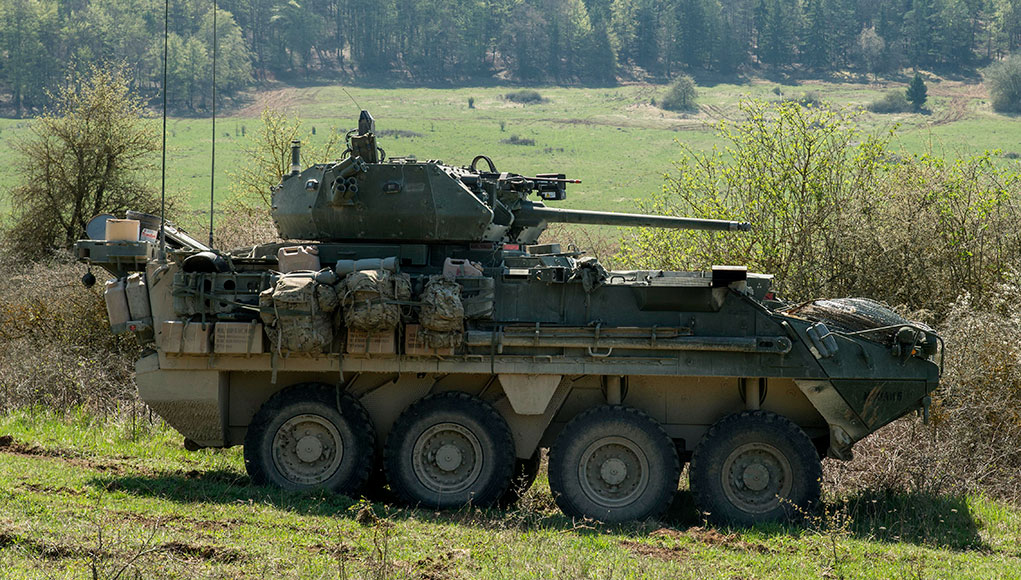
Information Technology Drives Massive Growth in Israel’s Combat Capability
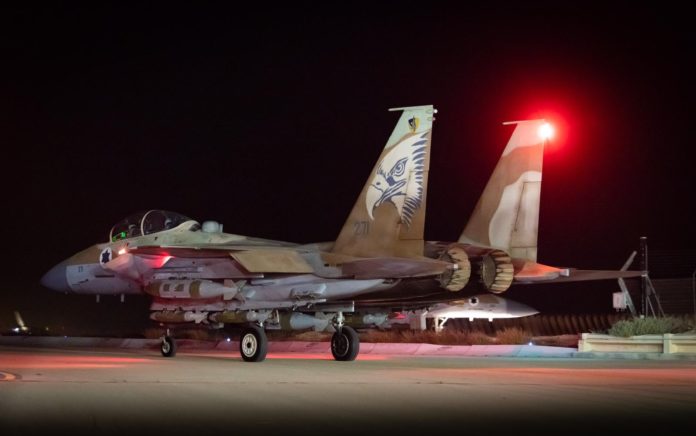
The recent conflict between Israel and the Hamas and Islamic Jihad terror organizations in Gaza brought to light numerous new capabilities developed on both sides. On the Israeli side, Iron Dome Counter Rocket, Artillery, and Mortars (C-RAM) system was a clear winner. In a large-scale deployment of the system throughout the country, Iron Dome units intercepted over 1,500 from 4,360 rockets fired at Israel, demonstrating a 90% success rate. Another new capability was the use of precision heavy guided ground-penetrating bombs to destroy more than 100 km of the subterranean tunnel network Hamas has built under the Gaza strip (the network is estimated to include 500 km of tunnels). Orchestrating the entire operation was the new command and control network recently fielded by the IDF.
The Palestinians challenged the Iron Dome with extensive rocket salvos, some including 50 rockets or more. Up to 140 rockets were fired in 20 minutes. They have markedly extended the range of their rockets and employed new multiple launchers stacking six, nine, and 12 heavy rockets fired at targets 70 – 90 km away. They also introduced heavy Rocket Assisted Munitions (IRAM) loaded with 400 kg of explosives, aimed at cross-border short-range targets.
They tried to reach targets farther than ever before, at ranges up to 200 km, deployed attack drones, and autonomous submersibles (UUV) in an attempt to hit Israel’s offshore platforms. A significant new capability demonstrated in operation ‘Guardian of the Walls’ were attacks against the subterranean network Hamas has built under the populated areas throughout the Gaza strip. The attacking change was a dramatic improvement in efficiency, a process enabling the close collaboration of air, land, sea, space, and cyber operations.
The Targeting Revolution
“We dramatically shortened the time of closing the Sensor-to-Shooter processes, or ‘fire circles’ – the time between the detection and location of a target to the attack of that target.” Brigadier General Yariv Nir, the chief communications and information technology officer in the IDF cyber and cyber defense division told ‘People and Computers’. “This process includes receiving information from a variety of sources, sensors, intelligence, operational and legal elements, the processing and dissemination of that information to different stakeholders and, finally, issuing the orders to attack that target, with the information necessary for precision attack. This process has been shortened by 40% – 30% in recent years.”
According to the new method of work, the army first decides what the concentration of effort is, what are the enemy abilities they want to deny, and then performs the target research to find the most suitable targets. Based on the target database that keeps refreshing all the time, the targeting system automatically taps information from the target pool, uploads insights, and selects the best targets based on specific parameters to formulate a fire plan. This process is very precise, as the accuracy of attack is down to targets located in a specific window or room in a house.
According to the IDF, the Southern Command Fire Center and Air Force headquarters can carry out an attack of thousands of targets per day. During the recent campaign, the IDF launched 1,500 strikes, primarily against the underground network in Gaza, destroyed 15 strike tunnels (directed at the border), struck 340 rocket launchers (including 79 multiple launchers of heavy rockets).
To fill the target database ‘bucket’ the IDF has recently fielded an ICT ‘machine’ that automates the production of targets, from the initial indication phase to the final indictment phase and its signing by three different intelligence agencies. In the past, this task was mainly based on human research work that took days, even weeks, but now it is done in few hours.
Information Dominance
To accelerate the targeting process the IDF employed a digital situation assessment performed with the IDF operational Internet service provided through the combat cloud infrastructure. This capability that was previously reserved only to the General Staff is now extended to the division level, enabling staff officers to share a joint situation picture and conduct situation assessments on tools developed in the Information and Communications Technology (ICT).
This situational picture gathers all activities related to enemy actions, including mortar and rocket launches and impact points, red and blue force locations, and operational plans. The system also provides decision support and automated reporting tools that save time and accelerate decision and action. Decision-making is based on real-time information fusion, tapping all the relevant intelligence with advanced information extracting tools. This process allows cross-reference and information fusion at a very high level. For example, if a certain site was attacked, but the launches continued from it – an alert is received immediately. This capability enables IDF commanders at the operational level to make information-based decisions in real-time.
Although the system proved highly effective, initial lessons learned by the IDF show that the process of detection and localization of rocket launchers still has room for improvement, since the IDF succeeded in destroying only 40 percent of these elusive targets, thus allowing Hamas to continue and launch rockets throughout the conflict.
The core delivering this operational capability is the latest version of Elbit System’s Digital Army Program (TORCH 750), the main C4ISR system of Israel’s Defense Force (IDF), that was recently fielded up to the division level. During the operation, deployed systems were augmented with much more bandwidth to address the exponential demand from users through multi-domain services. The system was previously deployed at the brigade level and below, including the Golani Brigade, the 7th Armored Brigade, the Commando “Oz” Brigade, and the Multi-Domain unit. Shortly before the operation, the system became operational at the division level, as the 162nd and 36th Divisions were preparing for a large-scale exercise planned for the summer.
The previous hierarchical command and control of military domains of ground, underground, sea, sky, and space spheres required specific networks that could not easily exchange information. The new system integrates data from the three IDF branches—ground, air, and naval units—to create a combat network for the multi-domain battlefield. This network enables the modern combat force to communicate in the most efficient way possible and allows the entire combating force, from the division and brigade commander to the soldier in the field, to communicate in the fastest way possible. This operational flexibility enables every user to seamlessly reach other users regardless of the interference, location, or domain.
This interoperability allows all parties in the battle to communicate sharing a common operational language based on standardized communications and security protocols. For example, smart rifle sights allow soldiers in the field to mark a target, which will appear on the screen of a senior commander in the command center. The system calculates which is the right weapon to use, what is the right munition, what is the exact angle needed to attack. Upon selection and confirmation, the system then sends within seconds the target information to a weapon system to perform the attack.
In addition to communications and processing the Digital Army Program system integrates decision support services to help officers processing information and taking decisions rapidly. Officers are presented with available order-of-battle and locations of all combat elements, ammunition availability, and supply levels. The system accesses all sensors that can watch the target, and stores technical data, combat doctrine, safety, and legal restrictions that apply to the use of the different weapons that could engage the target. Based on this data, and much more, the system selects several alternatives and recommends them to the commander for decision.
Multi-Dimensional C4I
The new C4ISR system was a central element in the formation of the IDF’s new “Oz” Commando Brigade and “Ghost” Multidimensional Unit, considered as the blueprint for the future IDF ‘multidimensional’ battalion. This unit has the manpower of a battalion, but the firepower, maneuverability, and terrain dominance of a brigade.
The unit was established as part of the military’s “Tnufa” multi-year plan initiated by IDF Chief of Staff Lt.-Gen. Aviv Kohavi. The multidimensional battalion is prepared to fight on any terrain, including underground, in tunnels; above ground, and near the ground, where the enemy is expected to use drones to reconnaissance and attack. The Oz Commando brigade is part of the IDF deep attack force.
Ghost and Oz Commando Brigade can rely on the advanced communications and networking provided by TORCH 750 to effectively employ small units, empowered by organic intelligence and firepower, and use transport, logistic, and fire support from the ground, air, and sea.
SOCOM Places a First Order for Switchblade 600 Loitering Missiles
AeroVironment announced today the receipt of a contract for its new Switchblade 600 loitering missile. The order was received from the Special Operations Command which already uses the smaller Switchblade 300 loitering weapon. Unveiled at a virtual press conference in October 2020, Switchblade 600 is a scaled-up variant of the Switchblade 300 miniature loitering weapon. Switchblade is also expected to be one of the contenders for the US Marine Corps’ Organic Precision Fires-Mounted (O-PFM) weapon system.
The recent order by the United States Special Operations Command (USSOCOM) allocates $26 million for the delivery of weapons and their integration of the new weapon on specialized maritime platforms operated by US Special Operations Forces. Completion is expected by the end of 2022.
“Our team worked closely with our customers to develop Switchblade 600, a loitering missile system that addresses the increasingly complex needs and mission requirements of counterinsurgency operations and those against peer and near-peer adversaries,” said Brett Hush, AeroVironment vice president and product line general manager for tactical missile systems. “Integrating Switchblade 600 into combat platforms, such as the USSOCOM’s specialized maritime vessels, enhances force overmatch, minimizes warfighter exposure to enemy direct and indirect fires, and accelerates the maturation of this innovative solution.”
Switchblade 600
This all-in-one, man-portable, 50-pound (22.7 kilograms) solution includes everything needed to launch, fly, track and engage non-line-of-sight targets with lethal effects and can be set up and operational in less than 10 minutes. Switchblade 600 deploys from the launch tube in which it is transported to allow the flexibility for ground, air, or vehicle platform launches at extended stand-off range. This provides operators with superior force overmatch while minimizing exposure to direct or indirect enemy fires. With a 115 mph dash speed and on-board anti-armor warhead, Switchblade 600 has the firepower to engage and prosecute hardened static and moving light armored vehicles from multiple angles with precisely localized effects, while minimizing collateral damage.
Equipped with a high-performance EO/IR gimbaled sensor suite, precision flight control, and more than 40 minutes of flight time, Switchblade 600 delivers unprecedented tactical reconnaissance, surveillance, and target acquisition (RSTA).
This allows Switchblade 600 to transit up to 50 miles (80 kilometers) to a target area before conducting multiple confirmatory orbits, and engage in target prosecution – without the need for external ISR or fire assets. Should non-combatants be observed within the proximity of the target, Switchblade’s patented “wave-off” feature and recommit capability allows operators to abort the mission at any time, and then re-engage either the same or other targets multiple times based on operator command.
Mission control is conducted with a touchscreen, tablet-based Fire Control System (FCS) with tap-to-target guidance and the option to pilot the loitering missile manually or autonomously. Combined with its built-in mission planner and training simulator, the FCS provides operators with an intuitive platform to easily plan and execute missions precisely, while reducing cognitive load.
The system employs AES 256 digital encryption and SAASM GPS to provide the security, resilient communications, and signal integrity necessary to defend against electronic warfare capabilities employed by peer and near-peer adversaries in contested environments.
Loitering weapons are becoming a big business for Aerovironment. Earlier this month the U.S. Army has exercised an option on its Lethal Miniature Aerial Missile Systems (LMAMS) contract for additional Switchblade® 300 tactical missile systems for the Army and for export to an allied nation. This contract option worth nearly $50 increases the total value of the LMAMS contract to $122 million. Delivery will take place over a two-year period. In addition, the company also reported receiving a $13 million contract order to support the LMAMS in service. This contract has a total potential value of more than $40 million over three years. “The award for contractor logistics support approved through Joint Urgent Operational Needs Statement, reflecting high priority requirement and strong user demand from the frontline,” Hush added.

